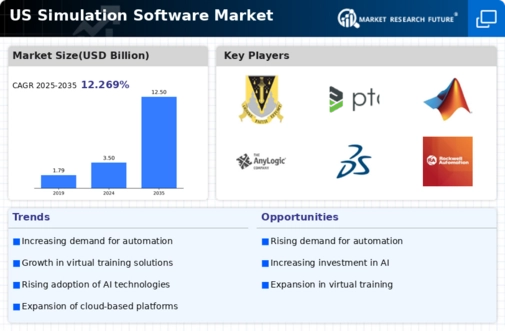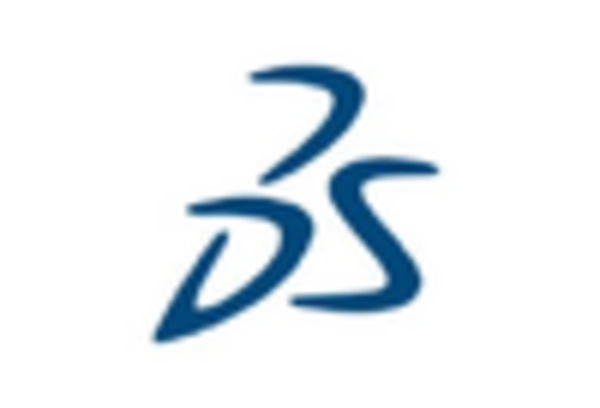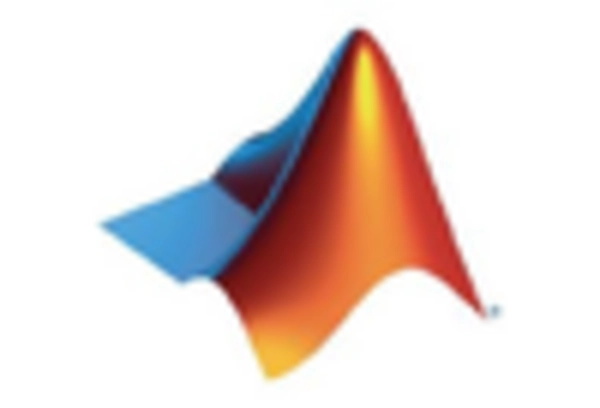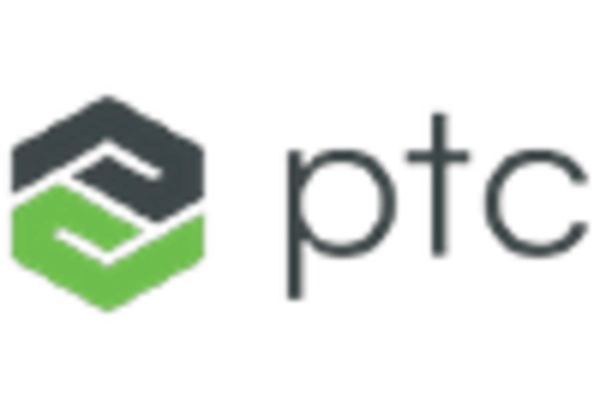Advancements in Computational Power
The simulation software market benefits significantly from advancements in computational power, which enable more complex simulations and analyses. The increasing availability of high-performance computing resources allows organizations to run intricate models that were previously infeasible. This capability is particularly relevant in sectors such as aerospace and automotive, where simulations can involve millions of variables. As of 2025, the market is expected to grow by 12% annually, driven by the integration of cloud computing and parallel processing technologies. Enhanced computational power not only improves the accuracy of simulations but also expands their applicability across various industries, thereby propelling the simulation software market forward.
Growing Emphasis on Risk Management
In the current landscape, the simulation software market is increasingly influenced by a growing emphasis on risk management across industries. Organizations are leveraging simulation tools to assess potential risks and develop mitigation strategies in areas such as finance, healthcare, and engineering. By simulating various scenarios, businesses can identify vulnerabilities and make informed decisions to safeguard their operations. The market for risk management simulation software is projected to expand by 10% annually, reflecting the heightened awareness of risk factors in strategic planning. This trend underscores the importance of simulation software in fostering resilience and adaptability in an ever-changing business environment.
Regulatory Compliance and Standards
The simulation software market is significantly impacted by the need for regulatory compliance and adherence to industry standards. As various sectors, including healthcare, automotive, and aerospace, face stringent regulations, organizations are increasingly utilizing simulation tools to ensure compliance with safety and quality standards. This trend is particularly evident in the development of medical devices and automotive safety systems, where simulations play a crucial role in validating designs against regulatory requirements. The market is anticipated to grow by 11% annually, driven by the necessity for compliance and the desire to minimize liability risks. This focus on regulatory adherence highlights the essential role of simulation software in facilitating safe and compliant product development.
Rising Demand for Virtual Prototyping
The simulation software market experiences a notable surge in demand for virtual prototyping, particularly within the manufacturing sector. Companies are increasingly adopting simulation tools to create digital twins of their products, allowing for extensive testing and optimization before physical production. This trend is driven by the need to reduce costs and time associated with traditional prototyping methods. In 2025, the market for virtual prototyping is projected to reach approximately $3 billion, reflecting a growth rate of around 15% annually. The ability to simulate real-world conditions enhances product quality and accelerates time-to-market, making it a critical driver in the simulation software market.
Increased Investment in Research and Development
The simulation software market is witnessing a surge in investment in research and development (R&D) as companies strive to innovate and maintain competitive advantages. Organizations are allocating substantial budgets to develop advanced simulation tools that incorporate cutting-edge technologies such as artificial intelligence and machine learning. This focus on R&D is expected to drive market growth by approximately 14% annually, as firms seek to enhance the capabilities and functionalities of their simulation software. The continuous evolution of R&D initiatives not only improves existing products but also paves the way for new applications, thereby expanding the overall landscape of the simulation software market.

















Leave a Comment